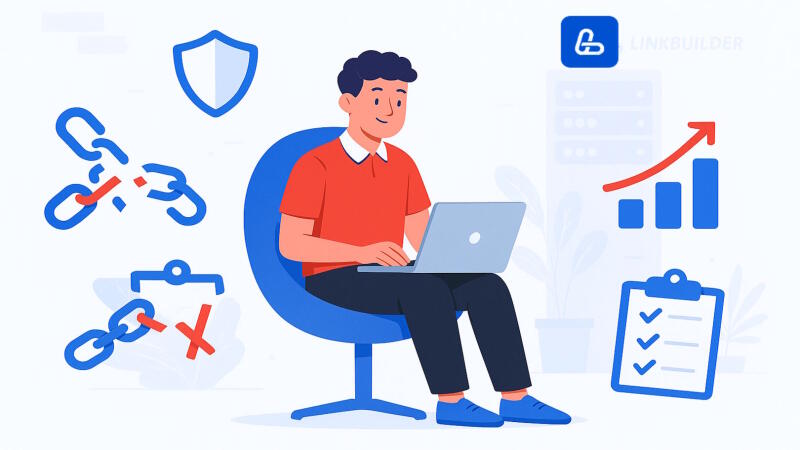White-label link building today is not just an additional service – it has become a strategic growth tool for digital marketing agencies and SEO teams. With rising competition and increasingly complex Google algorithms, backlink acquisition has turned into a standalone discipline that requires experience, proven tools, and well-established processes.
In this article, we’ll break down what white-label SEO services are, why agencies benefit from using this model, how to minimize risks, and how to scale link building under client branding. We will also show how at LinkBuilder.com we have built a transparent, safe, and profitable SEO link building partnership.
What is White-label Link Building?
White-label link building is a model where an agency offers its clients link building services for agencies under its own brand, while the actual work is done by an “invisible” partner. The client receives reports and results as part of the agency’s package, while the real work is executed by a professional team.
It is important to emphasize: white-label SEO link building is often confused with traditional link building outsourcing. But there is a crucial difference. In outsourcing, the client usually knows that the work is performed by an external provider. In the private label link building model, however, the agency retains full control over branding, communication, and the client experience, while the external team works completely behind the scenes.
Key features:
- The agency keeps full control over communication and positioning.
- The provider takes over research, strategy, donor prospecting, outreach, and publication.
- All reports are branded under the agency (link building under client brand), strengthening client trust.
The result: clients receive high-quality white-label backlinks, and the agency gets satisfied customers along with the ability to focus on business development without having to expand the in-house team.
Difference from an In-house Team
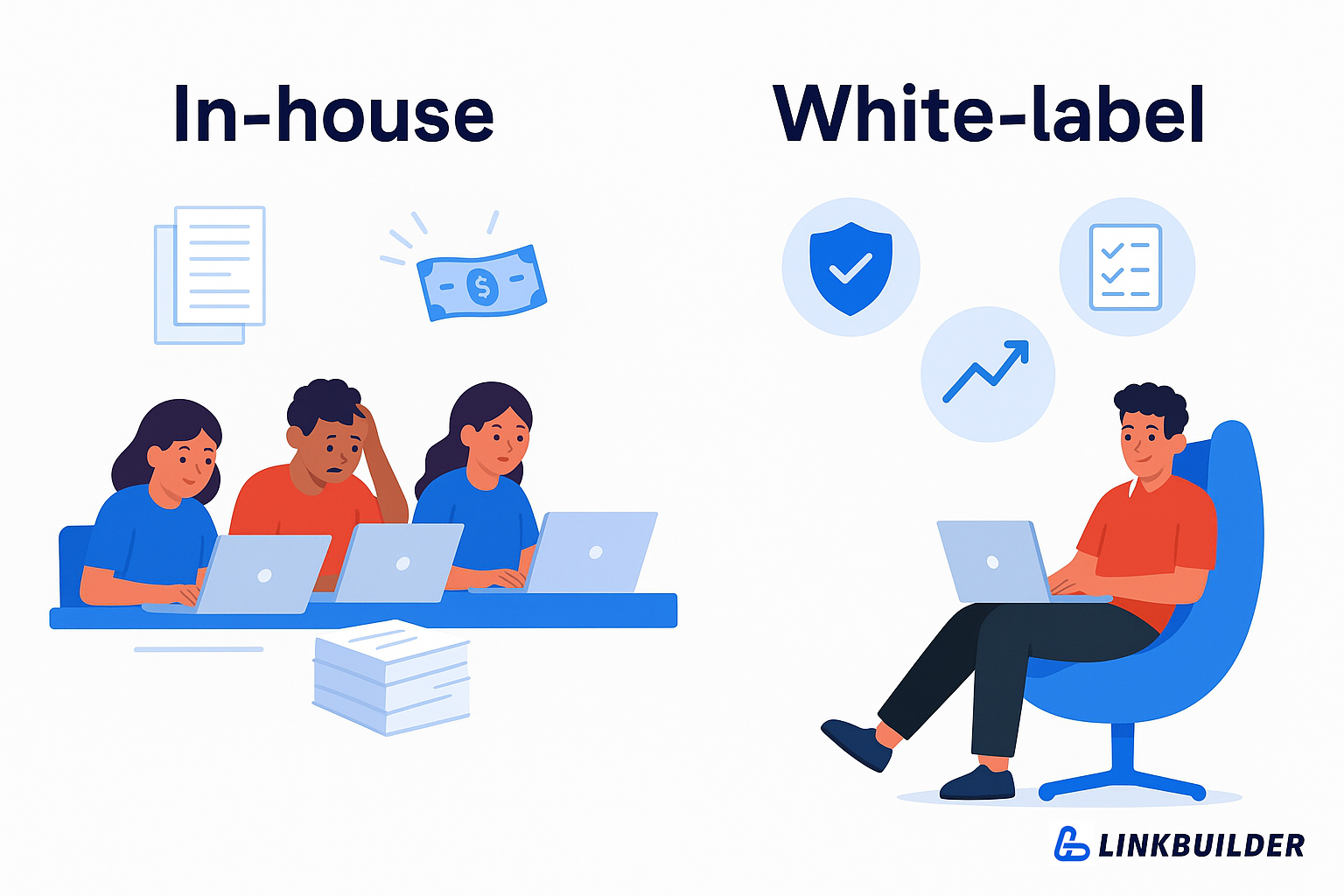
Many companies try to build link building operations inside the agency, turning it into something similar to SEO link building. They create a separate team of link builders, train specialists, buy tools, and maintain processes. But this approach is expensive, time-consuming, and risky:
- An in-house team requires constant expenses – salaries, training, software licenses.
- Scaling is possible only by hiring more staff.
- Mistakes or staff turnover directly affect link quality and delivery times.
By contrast, white-label SEO link building gives agencies flexibility: you can bring in a partner for a specific project or for your entire client base without changing the structure of your company. This reduces risks and ensures quality remains stable.
Why Agencies Benefit from White-label SEO Solutions
When an agency’s portfolio grows, the “link building” part begins to require more people, tools, and oversight. SEO white-label solutions solve this challenge systematically: you keep the client relationship and branded reporting, while the operational work is handled by an invisible partner. Below, we’ll explain the real-world benefits and how agencies can scale link building with white-label solutions.
1) Cost Savings and Predictable Expenses
Maintaining an in-house link building team is always expensive: not just salaries, but constant hiring, onboarding new employees, training, tool licenses, management overhead, and staff turnover. Essentially, you take on fixed costs that remain even during slow periods.
In the white-label SEO services format, the situation is different. Fixed costs turn into manageable variables: the agency pays only for a clear package and guaranteed results. If you have 20 clients, the package scales to that size. If activity drops one month, you simply reduce the number of placements without losing money on idle staff.
This flexibility is especially valuable during peaks: when a wave of new projects arrives, you don’t need to urgently expand staff and spend weeks hiring and onboarding. You just increase the package with your white-label SEO link building partner, and you seamlessly ramp up.
This model makes the economics of link building flexible and predictable: the agency avoids “warehouse” costs and can adapt to demand at any time while protecting margin and quality.
2) Scaling Without Losing Quality
As client portfolios grow, bottlenecks appear: more articles, more outreach, more placements. In an in-house model, this results in overloaded specialists and declining quality.
White-label link building allows agencies to scale without compromises. The partner already has an established pipeline: donor qualification checklists, outreach script libraries, content standards, and editorial QA. When volumes grow, the system absorbs the load while maintaining the same quality level.
Even if project activity decreases, scale can be easily “rolled back” without layoffs or reputation loss. This balance makes white-label link building services for digital marketing agencies a resilient solution for both growth and downturns.
3) Expertise “Out of the Box”
Google’s algorithms are constantly updated, editorial policies are becoming stricter, and backlink naturalness requirements are always changing. To keep up, in-house teams need continuous training and experimentation.
With the white-label SEO services model, agencies instantly access their partner’s expertise:
- An up-to-date donor database filtered by niche, organic traffic, and history.
- Outreach templates tested across dozens of industries.
- Correct anchor strategies and safe growth rates.
In essence, you get a “fast track” into complex niches without paying the cost of experiments and mistakes.
4) Customization and Client Brand Standards
White-label link building is not anonymous links – it’s work tailored to the client’s brand. All materials and reports are adjusted to the agency’s corporate style: from logos and color palettes to tone of voice and vocabulary.
Content is created in the client’s voice: expert articles, interviews, or research fully aligned with their style. Even the reporting looks like the agency’s own product, not that of an external team.
The result: a seamless client experience. The client is confident the entire process is managed by your agency, even though the technical execution is handled by your SEO link building partner.
5) Transparency and Safety
Trust is key: agencies cannot risk their reputation with shady tactics. Strong partners build white-label outreach services based on white-hat methods and document every step.
This includes:
- Strict donor selection based on relevance and organic traffic.
- A carefully planned anchor strategy, avoiding unnatural spikes.
- Transparent backlink growth tracking.
- Reports with snapshots and live URLs that can be shared directly with clients.
Such an approach minimizes the risk of penalties and fully protects the agency brand.
6) Focus on What Matters Most
Link building is just one module of SEO, but it consumes time and attention. In a white-label SEO link building model, agencies can focus on strategic tasks: building comprehensive SEO, analytics, product development, and client retention.
The technical process – donor prospecting, outreach, placements, reporting – becomes an invisible part of the service while maintaining branded reporting and transparency. This raises the agency’s value in clients’ eyes and helps keep LTV high.
7) Fast Entry into Competitive Niches
Some industries make acquiring quality backlinks especially difficult: finance, healthcare, SaaS, B2B. Cold emails from unknown brands rarely succeed.
A private label SEO link building partner already has access to relevant platforms, knows editorial requirements, and can package materials in the right format. This enables agencies to launch campaigns faster and deliver results where an in-house team would need months of trial and error.
8) Turning a Service Into a Product
The main advantage of the model: predictability. When every step of the process is standardized, agencies no longer sell “hours of a link builder’s work,” but a clear product: white-label backlinks with KPIs, SLAs, and branded reports.
This makes it easier to scale, package into pricing tiers, and upsell to existing clients. For customers, it looks like a structured service with measurable outcomes. For agencies, it’s higher margins and a strong competitive edge.
Quick Comparison of Approaches
| Criterion | In-house Team | White-label SEO Link Building |
|---|---|---|
| Scaling Speed | Depends on hiring and training | Almost instant thanks to external resources |
| Quality Control | High, but costly | High due to standards and SLAs |
| Costs | Fixed and ongoing | Flexible – pay per volume and results |
| Penalty Risks | Depend on team’s expertise | Lower with white-hat processes and vetted donors |
| Reporting & Branding | Internal | Link building under client brand |
When White-label Link Building Brings Maximum Value
White-label link building shows the greatest effectiveness in situations where agencies need to grow while retaining brand control and not losing quality:
- Client portfolios are growing and the team has hit a ceiling. In-house resources are limited: editors and link builders are overloaded, deadlines slip, and quality suffers. White-label SEO link building allows agencies to scale without hiring, while maintaining consistent output and transparent reporting.
- Need a fast launch in a new vertical or region. Entering new markets requires local donors, content in the audience’s language, and awareness of regional specifics. White-label SEO services provide access to relevant platforms and localized formats, speeding up launch.
- Clients demand transparency and strict brand guidelines. In competitive niches, clients increasingly insist on branded reports, consistent communication formats, and strict tone of voice. White-label link building under client branding allows agencies to deliver results in the same style as internal campaigns, without revealing external providers.
- Expanding service lines without growing staff. Adding new services (guest posting, outreach, digital PR) usually requires hiring specialists. With the white-label model, agencies get a ready-made service module to resell as their own.
This is exactly why white-label link building exists – an organizational model that enables agencies to scale without sacrificing quality, transparency, or reputation.
In short, it’s the answer to the key question: how agencies can scale link building with white-label solutions without extra risks, process chaos, or branding compromises.
At LinkBuilder.com, we work with this model every day: joining as the “invisible team,” taking on the operational part, and helping agencies deliver predictable growth. All reports and communications are branded under the agency, so clients see a unified service with no distinction between internal and external teams.
Our 8-Step White-label Link Building Strategy
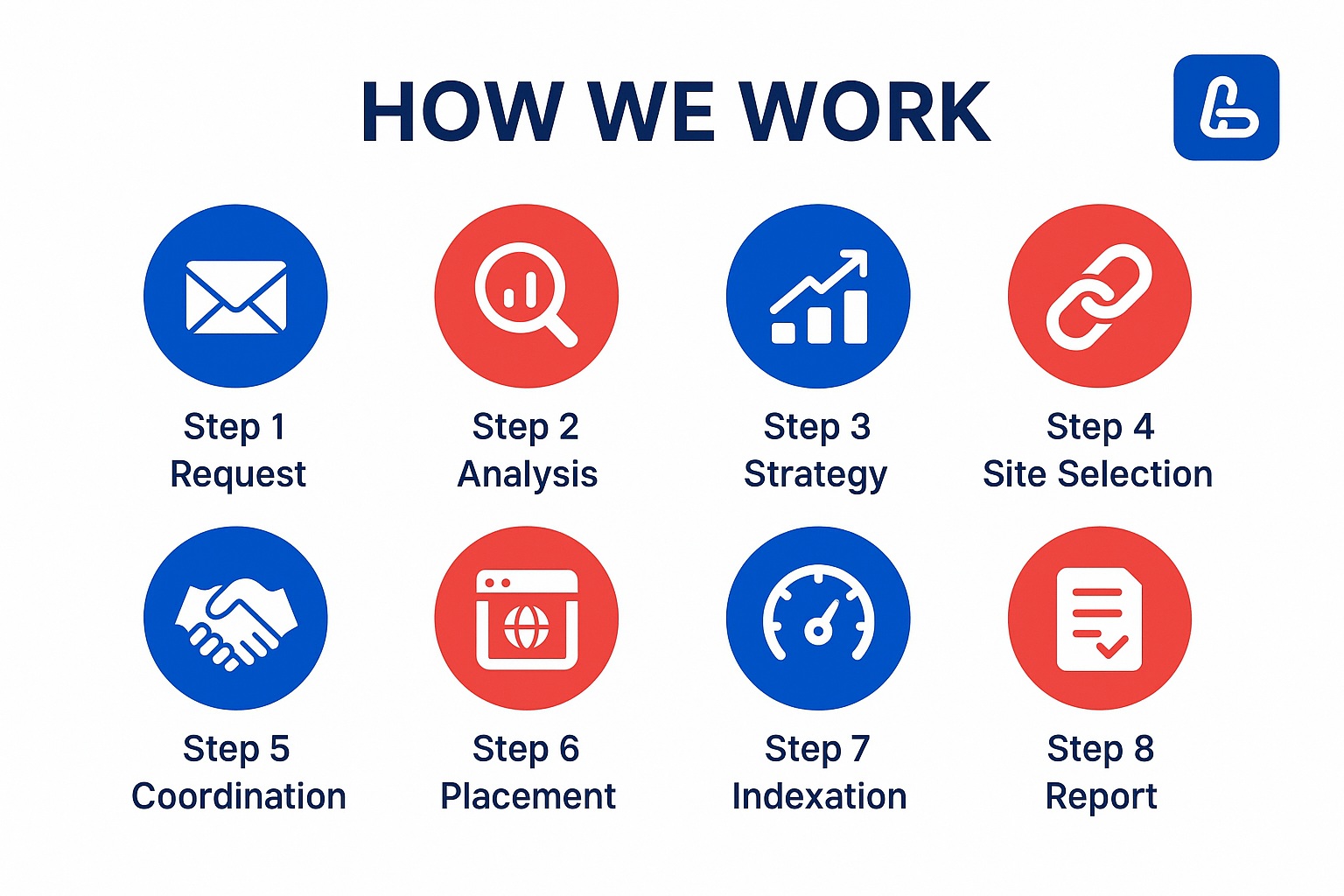
White-label link building is not a set of random actions, but a clearly structured process. To help agencies scale with confidence – without sacrificing quality or brand control – we’ve developed a transparent 8-step pipeline. Each stage is documented in reports, passes through quality gates, and is adapted to the client’s requirements. As a result, partners can resell link building under client branding as their own service – risk-free and with predictable economics.
1. Request
The process begins with the brief: the agency sends us details about priority money pages, target regions, and KPIs. We clarify the anchor policy (balancing branded, naked URL, and partial-match anchors), set stop-topics, and align with brand guidelines.
Even at this early stage, it becomes clear what results the client will see and in what timeline.
2. Analysis
Next, we carry out a technical and strategic audit:
- current state of the backlink profile;
- competitors and their agency link building tactics;
- available keyword clusters and potential donors;
- risks: toxic links, anchor imbalance, growth spikes.
The output is a clear “as-is” picture and a forecast of “where you can get” with SEO white-label solutions.
3. Strategy
Based on the analysis, we create a step-by-step plan:
- goals for growth in RD, traffic, and rankings;
- link distribution by clusters and page types;
- recommended pace (e.g. 20–40 links per month);
- anchor list and distribution ratios;
- a mix of formats (guest posts, expert commentary, reviews, Digital PR).
This transforms link building from “buying links” into a strategic white-label SEO service.
4. Prospecting Sites
With tools like Ahrefs, Semrush, Serpstat, and AI SEO GEO, we compile a long list of dozens of relevant donors:
- DR/UR, organic traffic and growth trend;
- geo and language;
- domain history via Wayback/Archive;
- cost and placement terms.
Every site passes through white-hat filters: no PBNs, no link farms, no spammy directories.
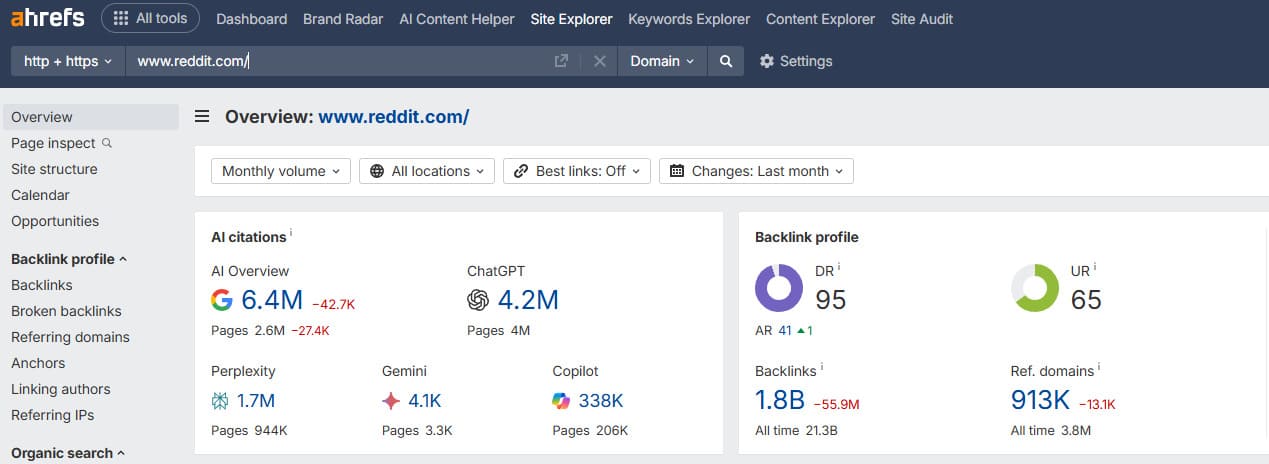
5. Approval
From the long list we create a shortlist and align it with the agency. The table includes:
- domain metrics;
- sample content;
- proposed publication format.
The agency eliminates unsuitable sites and approves priorities – ensuring that white-label backlinks will be fully relevant to the client’s niche.
6. Placement
Before publication, every link passes a quality gate:
- Domain check: organic traffic, history, indexability.
- Donor page check: no “outbound link dumps,” niche relevance.
- Content check: uniqueness, value, alignment with brand style.
- Link check: correct anchor, dofollow/nofollow status, no redirects.
Only after passing these checks is the content published, and the link becomes part of the client’s profile.
7. Indexation
After placement we track:
- whether the page is indexed in Google;
- whether the link and anchor remain live;
- whether the donor site adds outbound links in bulk;
- whether the placement impacts traffic and keyword clusters.
If a link is removed or lost, we trigger SLA replacement from a reserved donor pool.
8. Reporting
Every month the agency receives a white-label SEO report, branded and ready for client delivery. It includes:
- domain and URL list;
- DR/UR, organic traffic, geo data;
- anchors and their distribution;
- publication and indexation statuses;
- before/after snapshots with GSC/Ahrefs verification.
All reports are in the agency’s colors and logo – for clients, this is full link building under client brand.
Result
This 8-step white-label link building strategy transforms a chaotic process into a managed conveyor system. Agencies get:
- predictable cost structure;
- transparent branded reports;
- a scalable system that works equally well for 10 or 100 clients;
- brand protection and risk minimization thanks to multi-level QA.
For the agency’s clients, it looks exactly like internal work. For the agency, it’s a stable, safe, and scalable growth channel. You can order white-label link building services at LinkBuilder.com.
Working with Different Clients: Customization and Brand Standards
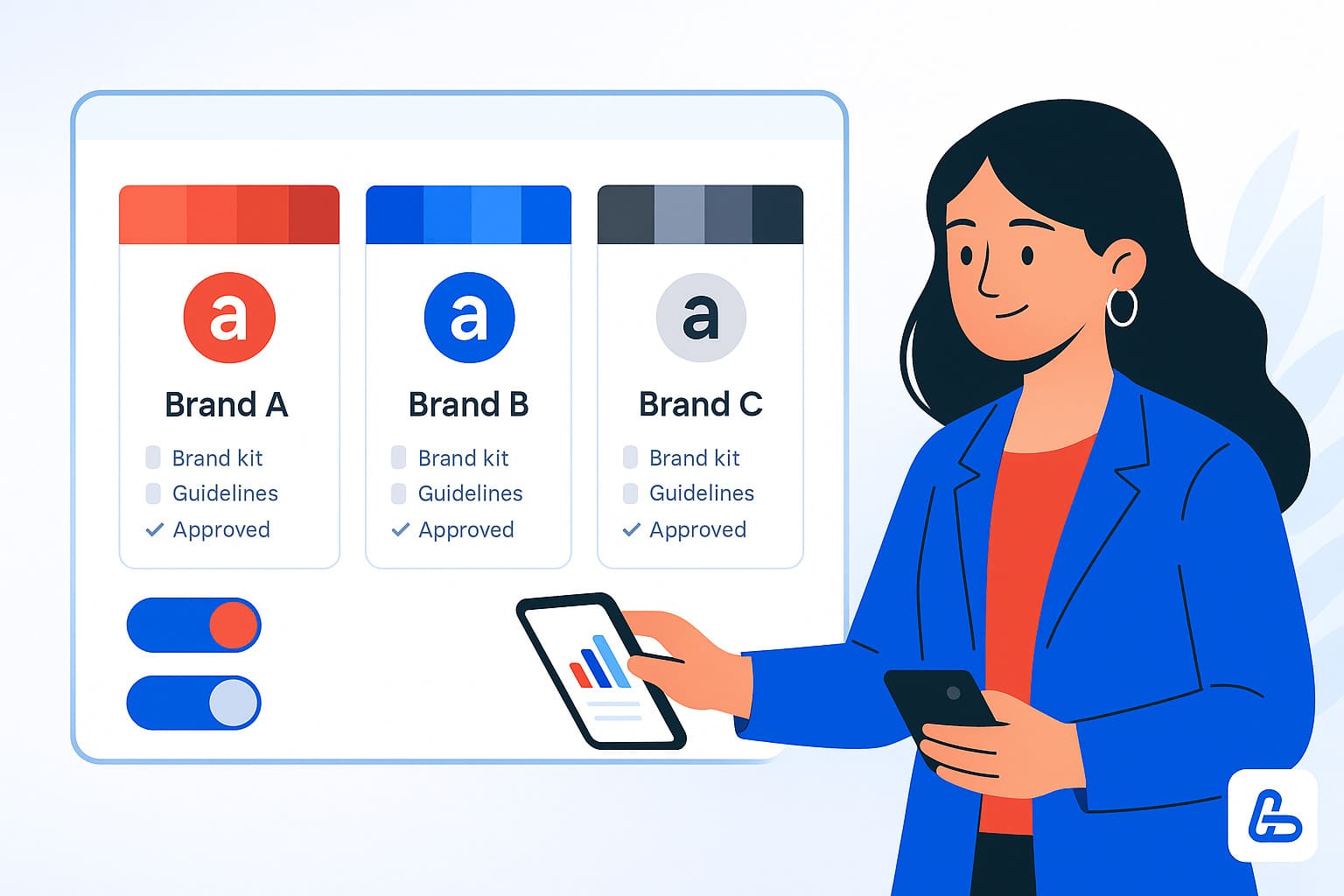
White-label link building is not “one size fits all,” but a modular framework that adapts to processes, KPIs, and brand voice. Below, we show how we integrate into agencies of different sizes to ensure a seamless client experience.
Collaboration Scenarios
1) Large Agencies (portfolio of dozens of projects)
What matters: scale, transparency, unified quality standards.
How we work:
- assign a partner manager and open a dedicated Slack/MS Teams channel;
- run weekly stand-ups with documented decisions;
- switch to a pipeline model: separate workflows and SLAs per project;
- use unified branded report templates for the agency’s entire client base;
- ensure compliance: NDA, access segmentation, tracking tables, action audits.
Result: the agency sees the full portfolio picture, while client teams experience consistently high service standards.
2) Niche SEO Teams (specialized verticals, high quality threshold)
What matters: donor relevance and expert-level content.
How we work:
- deep niche research: clusters, industry media, publication style;
- joint content plan: case studies, reviews, interviews, research;
- leverage client expert profiles for stronger E-E-A-T;
- strict pre-moderation: anchors, angles, fact-checking, primary source linking.
Result: links look like an organic part of industry content, reinforcing expertise and trust.
3) Full-service Digital Agencies (multi-channel campaigns)
What matters: synchronization with PR, content, PPC, and social media.
How we work:
- maintain a unified campaign calendar: outreach aligns with releases, events, sprints;
- build cross-channel messaging: one theme, multiple formats (press, blogs, infographics, lead magnets);
- deliver reporting where backlinks are embedded in the overall funnel (referral traffic, branded queries, assisted conversions).
Result: agency link building becomes an integrated part of the overall digital strategy.
How We Fit Into Client Processes
Onboarding (1–2 weeks):
- brief and goals: pages, clusters, KPIs, brand restrictions;
- RACI matrix: who approves donors, content, anchors, timelines;
- brand package: tone, visuals, stop-topics, anchor policies;
- access and tools: GSC/GA, Jira/Asana boards, comms channel, report format.
Working cycle:
donor research → shortlist for approval → content tailored to platform → personalized outreach → placement → QA → indexation and impact monitoring.
Minimum artifacts:
- anchor mix and growth plan;
- donor table with metrics and statuses;
- risk/benefit summary per placement;
- SLA-based replacement list.
Branded Reporting Setup
We deliver reports in white-label format – under the agency’s logo and style.
Levels of reporting:
- Executive (1–2 slides): KPIs, RD/positions/organic growth, wins/next steps.
- Ops detail: list of domains/URLs, anchors, context, publication dates, snapshots.
- Data-room: CSV/Sheets exports for BI tools (Looker Studio / Power BI).
Inside the report:
- breakdown by link type and cluster;
- map of link impact on business goals;
- history of changes and SLA replacements.
Maintaining Tone and Style
Private label SEO link building means content and outreach sound as if they came from your own team.
What we use:
- tone library: “how we write” and “how we don’t write”;
- anchor policy: approved vs restricted phrasing;
- unified glossary and transliteration rules;
- author bios for E-E-A-T;
- outreach templates: first contact, follow-up, media pitches;
- legal framework: NDA, corporate emails, SPF/DKIM/DMARC setup.
Small Table of Client Types & Solutions
| Client Type | Pain/Goal | How We Solve It |
|---|---|---|
| Large Agency | Scale + unified standard | Streamlined pipelines, SLAs, unified reports, partner PM |
| Niche SEO Agency | High relevance & expertise | Deep research, strict QA, client expert profiles |
| Full-service Digital | Cross-channel synchronization | Unified calendar, cross-channel messaging, integrated funnel metrics |
Launch Checklist
- Brief and KPIs aligned, RACI approved.
- Brand package received: tone, visuals, stop-topics, anchor policy.
- Comms channels and reporting format set.
- Donor shortlist and anchor plan approved.
- SLA for placements, replacements, and escalations signed.
In summary: customization is not paperwork, but the way to make white-label SEO link building an invisible part of your service. Agencies gain speed, flexibility, and fewer operational risks. Clients see a seamless experience – it looks like the work of your team, but with greater scale and stability.
Risks and How to Avoid Them
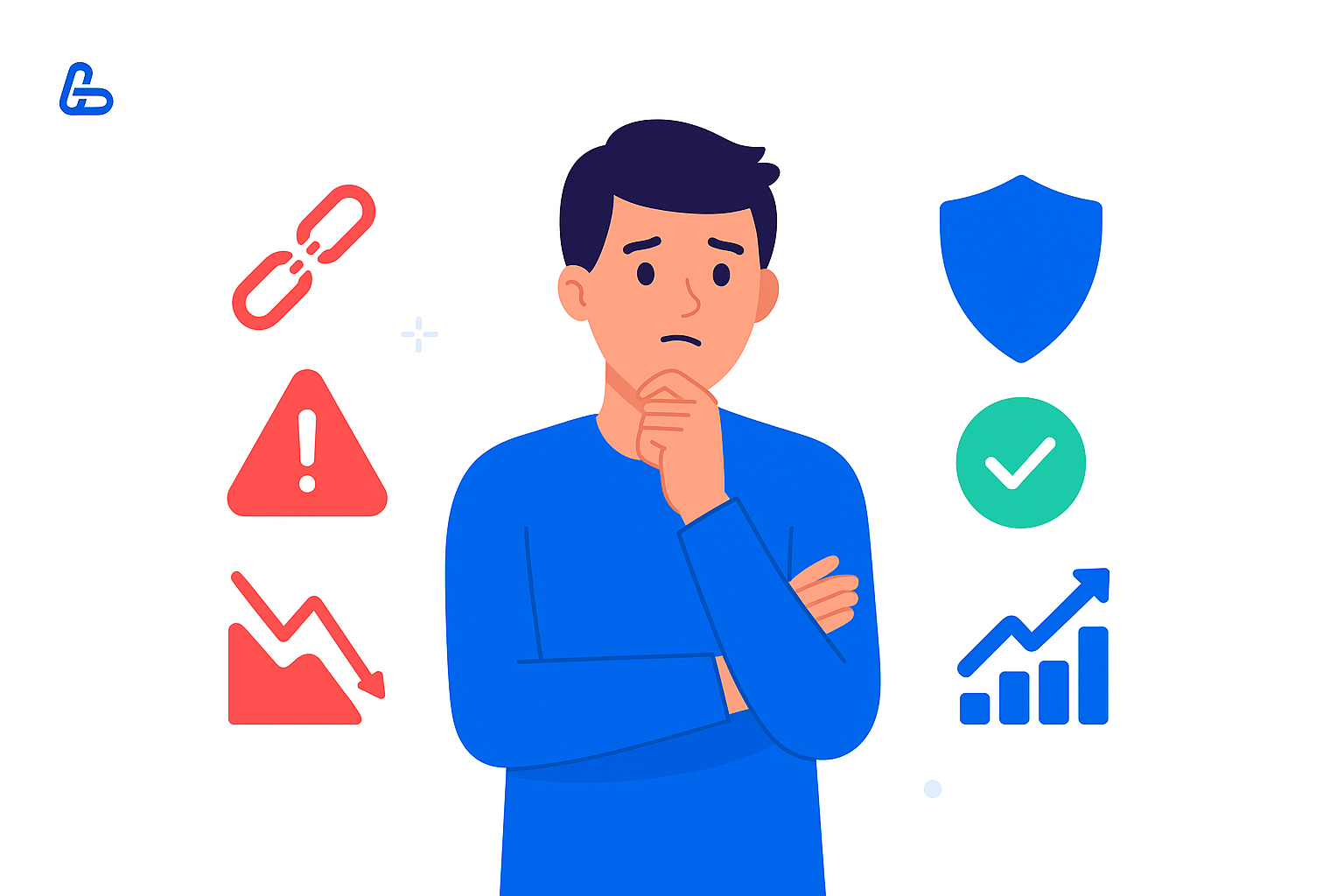
In white-label link building, the biggest threats are not only Google penalties, but also management failures: loss of quality when scaling, reputational incidents, and lack of transparency from a partner. Below is a practical “minefield map” and proven measures that help agencies avoid these risks in advance.
1) Quality Loss at Scale
This is the most common threat. When an agency’s client portfolio grows but the control system lags behind, the “chain breaks” at the weakest links:
- overheated donors and placements in outbound link farms;
- “factory-style” content without expertise;
- unmanaged anchor mix;
- sudden spikes in backlink growth;
- indexation drop.
How to prevent it:
- Quality Gates at every stage: donor → content → anchor → placement → post-monitoring. Each step has checklists, responsible roles, and a “stop” right.
- Source normalization: limit links per domain/editor per month, diversify formats and donor types.
- Anchor policy: fixed shares of branded, naked URL, and partial-match anchors, with monthly reconciliation.
- Even growth pace: no bursts or “link bombs” – only organic dynamics.
- Double editing: niche editor + brand editor (tone, E-E-A-T, compliance with style guides).
- Audits: 10–20% of placements checked by senior specialists, retrospectives on incidents.
- Tools: internal outreach CRM, dashboards, plus Ahrefs/Semrush for organic checks and GSC for indexation.
2) Google Penalties: Why You Can’t Use PBNs
PBNs and other network schemes leave visible footprints: shared hosting, identical templates, cross-linking, traffic decay. Modern algorithms (including SpamBrain) detect these patterns better and better – often ending in devalued backlinks or manual penalties.
Best practices for white-label backlinks:
- Only white-hat donors with real organic traffic and active audiences.
- Content with value: data, research, expert commentary.
- Zero tolerance for PBNs, link farms, or low-quality directories.
- UGC only strategically and in small doses.
- Disavow is insurance, not a strategy – use selectively with reasons.
- Natural profile: diversity of sources, attributes, anchors, and stable growth dynamics.
3) Reputational Risks
In white-label SEO link building, the agency’s reputation is paramount. Any mistake “behind the scenes” hits your brand first.
Risk zones & solutions:
- irrelevant placements → strict donor screening by metrics + manual review of link environment;
- missing “sponsored” label where required → compliance with editorial policies and local regulations;
- breaking client’s style → brand guide (tone, glossary, stop-topics), final review by brand editor;
- revealing the partner → link building under client brand, NDA, corporate domains, SPF/DKIM/DMARC compliance;
- removed placements → SLA for replacements, backup donor pool, crisis comms scenarios.
4) Partner Checklist
Use this list to quickly evaluate whether a team is ready to work in a white-label format:
Processes & Transparency
- Full pipeline in place: brief → donors → content → outreach → placement → reporting → monitoring.
- Access to branded report samples and SLA on timelines/replacements.
- KPIs tied to business goals (RD, indexation, recipient page traffic, cluster visibility).
Quality & Safety
- Strict donor screening: organic traffic, domain history, indexability.
- Documented anchor policy and growth pace.
- Clear rejection of PBNs and link farms.
- Post-monitoring: indexation, link retention, platform change reactions.
Tools & Data
- Using Ahrefs/Semrush, GSC, internal CRM, dashboards.
- Ready to work in your boards (Jira/Asana), channels (Slack/Teams).
- Data handling policies comply with GDPR and local standards.
Team & Responsibility
- Dedicated roles: account manager, editor, link builder, QA.
- Test sprint: 3–5 placements with full cycle.
- Contract fixes SLA: volume, speed, replacement, escalation process.
If even two items from this checklist are missing, the partner is likely not ready for white-label link building services.
Bottom line: Risk management in white-label SEO link building is not a single “magic tool” but a holistic system: disciplined processes, multi-level QA, white-hat methods, and transparent reporting. This approach allows agencies to grow steadily, safely, and without reputation surprises.
Technology and Scaling
In modern white-label link building, technology is not an “add-on” but the foundation of the operational model. Without outreach automation, centralized reporting, and systemic quality control, an agency cannot maintain client trust while scaling.
1) Automation: From Chaos to a Managed System
When an agency runs 2–3 projects, donor lists can still be built manually and emails sent “by feel.” But with 20+ clients, the process becomes unmanageable: replies get lost, databases go stale, deadlines slip.
To eliminate chaos, we use specialized solutions:
- Respona – automates editor contact search, mass personalized outreach, and reply tracking.
- Hunter – email discovery and validation.

- Buzzstream, Pitchbox – full CRMs for outreach: track conversation history, contact statuses, deadlines.
- Ahrefs / Semrush / Serpstat – mass donor analysis, filtering only relevant domains, backlink profile monitoring.
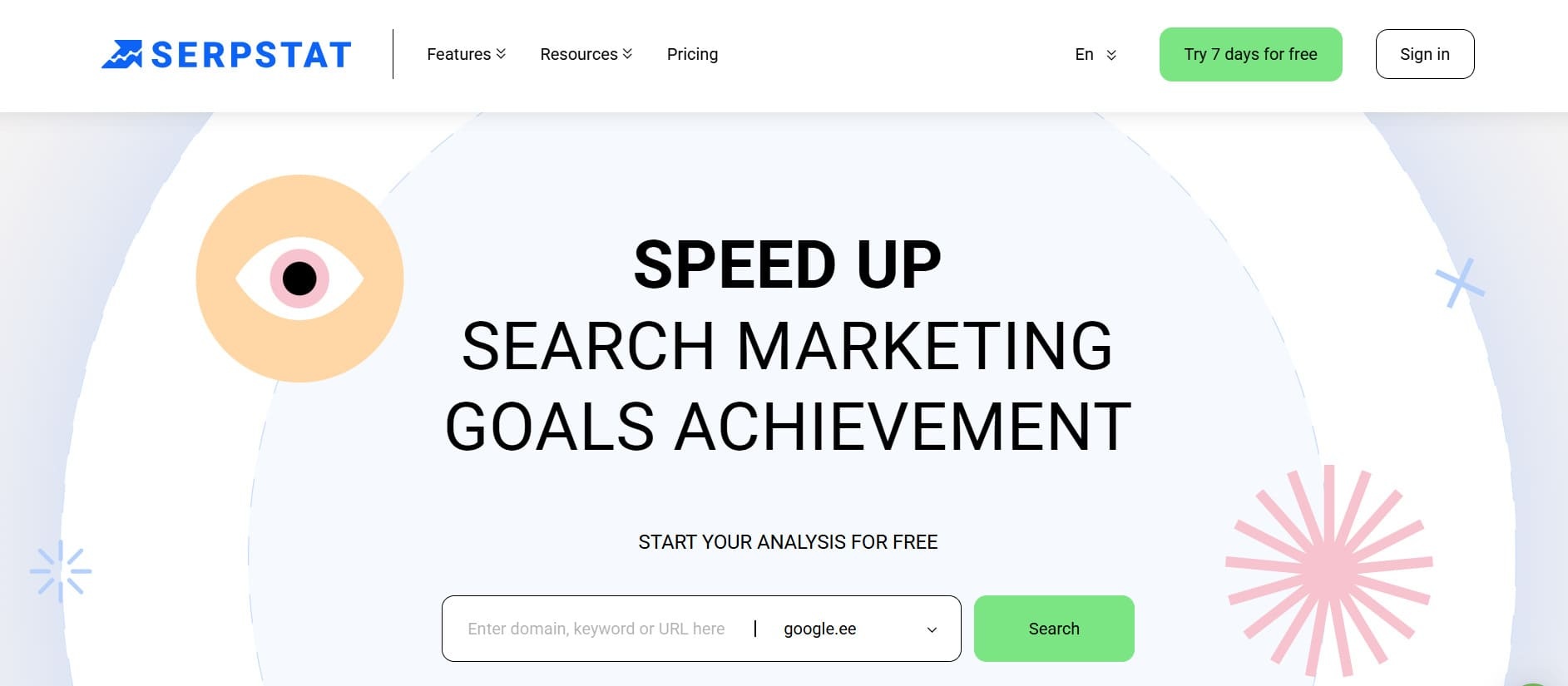
Result: outreach turns into a managed conveyor system, while the link builder’s manual work focuses only on high-value tasks – selecting sites and final content editing.
2) White-label Reports: Transparency and Brand Control
For agencies, one thing is critical: the client must believe the work is done by their team. That’s why we implement white-label SEO reporting, fully styled under the agency’s brand.
Such reports include:
- list of new links with live URLs;
- donor metrics (DR, UR, organic traffic);
- anchor list and distribution;
- indexation status and keyword cluster dynamics;
- analytics: visibility growth, new pages in top rankings.
Every document is branded with the agency’s logo and colors, so for the client, it looks like the work of their internal team. This is how seamless private label link building works – where control is retained and the brand is fully protected.
3) Scaling: From 10 to 50+ Projects Without Quality Loss
Growth always raises the fear: “quality will drop.” But with a proper system, scaling becomes not a threat but an advantage.
Key elements:
- Unified pipeline: all projects follow the same process (research → donor approval → content → outreach → reporting). This prevents chaos and reduces risks.
- Verified donor pool: a base of hundreds of sites with transparent metrics accelerates campaign launches.
- Role separation: content, outreach, analytics – each handled by specialists, not “jack-of-all-trades.”
- Routine automation: CRMs and tools (Respona, Hunter, Ahrefs) cut manual work by 40–60%.
- Multi-level QA: audits and spot checks ensure stability even at high volumes.
Example: an agency runs 10 projects × 30 links/month = 300 links. When scaling to 50 projects, volume grows to 1,500 links. Without a system, that’s a disaster. With automation, donor pools, and branded reports, workload distributes evenly – and each project still feels “personal and deep,” even if the scale is 5× bigger.
White-label link building combined with technology is the model that enables agencies not just to survive but to grow in a managed, predictable way. Automation removes routine, branded reporting protects agency image, and systemic QA makes it possible to scale from dozens to thousands of links without losing trust or reputation.
White-label Link Building Pricing
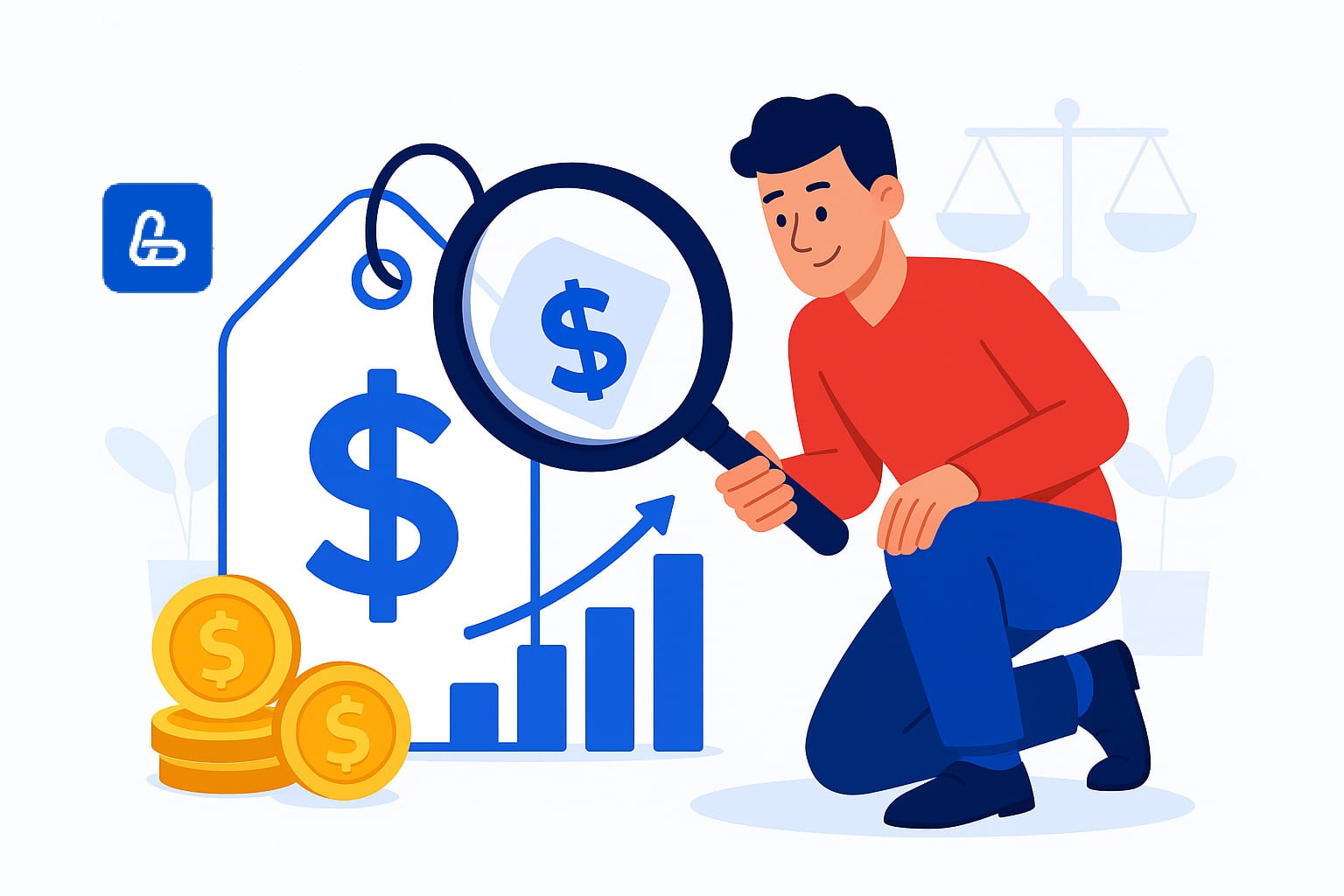
When agencies consider white-label SEO services, cost is almost always the number-one question. A common mistake is comparing this format to in-house with the assumption that “full control = cheaper.” In practice, the opposite is true: white-label SEO link building helps agencies maintain predictable costs and profit margins while preserving client-facing branding and transparency.
This model is often confused with classic outsourcing, but it’s not the same. White-label is about brand control and client-facing reporting under your name, not simply “sending work outside.”
Why White-label Is Cheaper Than In-house
- No permanent staffing costs. To maintain 30–40 backlinks per month consistently, you’d need at least 3–5 roles: link builder, editor, outreach manager, analyst, coordinator. That means salaries, taxes, training, replacements – high fixed expenses that simply don’t exist in link building services for agencies in a white-label format.
- No hidden tool expenses. Ahrefs, Semrush, Pitchbox/Respona, Hunter, and others cost thousands of dollars annually. In white-label link building, these white-label link building tools are already included in the package price.
- Scalable flexibility. In-house teams can’t “scale in a week” – hiring and onboarding takes time. With white-label, volume increases painlessly: you just upgrade your package without adding headcount.
- Pay for results, not hours. In white-label link building, you pay for clear deliverables – domains, URLs, metrics, indexation. In other words, for complete white-label backlinks with verified value.
- Transparent invoicing and margin forecasting. Predictable pricing tiers for different donor levels simplify planning and presales.
Frame: White-label link building under client branding preserves agency control and reputation – unlike outsourcing, it never mixes your service with a third-party vendor.
Market Price Ranges
In white-label backlink acquisition, three key factors define cost: domain quality (DR/UR), donor’s organic traffic, and placement format (guest post, niche edit, review).
- DR 20–40, traffic up to 1,000 visits – $70–100.
- DR 40–60, traffic 1,000–5,000 visits – $120–200.
- DR 60+, traffic 5,000–20,000 visits – $250–400.
- Premium sites: DR 70+, traffic 50,000+ – $500–800 per placement.
These ranges are for budgeting. The final estimate depends on niche, geo, anchor requirements, and each platform’s editorial policies.
At LinkBuilder.com, our packages start at $2,000/month.
Each package includes:
- full cycle (strategy, donor selection, outreach, placements, indexation, reporting);
- branded reports for agencies;
- +15% cashback margin for partner agencies.

Why LinkBuilder.com Is Different
Unlike the “gray market,” where prices fluctuate and depend on a webmaster’s mood, at LinkBuilder.com pricing is fixed and transparent:
- Every backlink comes with clear metrics: DR/UR, organic traffic, region.
- No hidden surcharges for “editorial changes” or “fast-track publishing.”
- Same conditions for all partners – you always know your base cost and margin.
- For large-scale white-label link building services for digital marketing agencies, we provide volume discounts.
This simplifies presales and makes client portfolio management predictable – the essence of true white-label SEO solutions.
Comparison of Models
| Criteria | In-house | White-label Contractor | LinkBuilder.com |
|---|---|---|---|
| Staff costs | 3–5 employees, $8,000–12,000/month | None | None |
| Tools (Ahrefs, Hunter, etc.) | $1,000–2,000/month | Included | Included |
| Scalability | Hiring & training required | Yes | Yes, plus private donor pool |
| Donor quality | From scratch | Depends on vendor | Verified sites, updated database |
| Pricing transparency | High fixed costs | Often unclear | Fixed, predictable pricing |
| Risks | Turnover, efficiency drops | Depends on vendor | Minimized – only white-hat + strict QA |
| Agency margin | Low | Medium | High, easy to forecast |
| Brand control | Full | Varies | Full – link building under client brand with branded reports |
White-label link building cuts total costs by at least 50–60% compared to in-house, while keeping predictable quality and transparency.
With LinkBuilder.com, agencies also avoid vague pricing and unstable suppliers: you get stable rates, branded reporting, and scalable growth without compromise – exactly what clients expect from a mature SEO link building partner.
When to Use White-label Link Building – and When Not To
White-label link building is an organizational model, not a “growth hack button.” It delivers maximum value where speed, predictability, and brand protection matter – and is less relevant when total in-house control is essential or tasks are minimal.
Important: white-label should not be confused with outsourcing. With white-label SEO services, you retain brand control, link building under client brand, and branded reporting.
When to Use
- Agency needs rapid scaling When portfolios grow, deadlines shrink, and internal resources are limited, white-label SEO link building adds dozens of placements without hiring or long onboarding. The partner brings ready-made pipelines, donor pools, anchor strategies, and SLAs – the exact answer to how agencies can scale link building with white-label solutions.
Win: faster launch, stable pace, predictable timelines, consistent backlink growth. - No resources for an in-house team Link builders, editors, outreach managers, plus tool subscriptions are costly and time-intensive. White-label SEO services turn fixed costs into controlled variables: you pay for agreed volume and measurable quality, not “hours.” Reporting and client communication stay in your hands.
Win: lower package costs, no idle payroll, predictable margins. - Client demands transparency and brand reporting Some clients insist on reports under your logo, consistent metrics, and communication “as if your agency does everything.” With link building under client branding, the partner remains invisible: white-label reports, approved outreach templates, content style guides, unified SLA.
Win: full client experience control, no operational overload.
Extra strong cases:
- launching into new languages/regions (local donors, localization, multi-region strategies);
- “tough” niches (finance, health, SaaS B2B) needing high trust/relevance;
- volatile demand (seasonality, releases, keyword spikes) requiring flexible but controlled scaling.
When Not to Use
- Full in-house control is required If your value proposition is based on exclusive editorial relationships, R&D experiments, and strict data compliance, white-label link building vs in-house will lose – you really need your own production line.
- Microscopic projects (a few links occasionally) If you only need “a couple of links here and there,” spinning up a full white-label SEO link building pipeline is overkill. Better to do manual outreach or buy a micro-package.
- Philosophy: “we only do it ourselves” If your positioning relies on 100% internal production – or you allow “gray” tactics (PBNs, link farms) – then white-label SEO services aren’t for you. The model is about white-hat, transparency, replicability, and long-term risk management.
Quick Decision-Check: Is White-label Link Building Right for You?
Answer yes/no:
- Need to scale backlinks in 2–4 weeks without hiring? White-label delivers first placements within 1–2 weeks – critical when multiple big projects start at once.
- Clients demand branded reports & strict SLA? If every detail in reporting reflects your brand, white-label is the right choice.
- Have volatile demand (spikes/drops)? In-house = overload or idle staff. White-label = volumes scale up/down without layoffs.
- Need local donors/languages and multi-regional coordination? White-label partner already has regional donors, outreach in native languages, and editorial know-how.
- Want to focus on strategy & LTV, not routine? Delegate donor selection, outreach, publishing, monitoring – while keeping client-facing brand control.
Result:
- Yes ≥ 3 → white-label = real gains: faster scaling, lower risks, transparent economics.
- Yes ≤ 2 → better with in-house or hybrid model.
Hybrid Model (Often Optimal)
For many agencies, a hybrid approach works best:
- In-house: strategy, cluster prioritization, final content/brand checks, donor/anchor approvals, brand guide enforcement.
- White-label partner: donor sourcing, content prep, outreach, publishing, monitoring.
Result:
- campaign launches 2–3× faster;
- operational risks minimized;
- predictable cost structure;
- stable quality of white-label backlinks, even at scale.
Why Professional White-label Link Building = Agency Growth
White-label link building is not “buying backlinks under another logo.” It’s an organizational model that transforms link acquisition into a product with predictable costs, scalability, and strict SLAs.
Agencies gain:
- Predictable costs. No salaries or licenses, only variable spend on white-label backlink acquisition with clear metrics.
- Upsell speed. Scale +30–100 placements/month instantly, no hiring delays.
- Lower hidden costs. Multi-level QA reduces errors and rework.
- Stronger positioning. Agencies sell not “hours of link building” but structured white-label SEO services with KPIs and branded reporting.
In-house vs White-label Partner
| Factor | In-house Team | White-label Format (Link Building Under Client Brand) |
|---|---|---|
| Launch speed | 2–4 months (hiring, training) | 1–2 weeks (ready pipelines) |
| Scaling | Only via hiring | Instantly via packages |
| Cost base | High, fixed | Variable, transparent |
| Quality risk | On the agency | Shared with partner, SLA enforced |
| Branding | Own | White-label link building under client branding |
Conclusion: White-label link building beats in-house on speed, cost predictability, and quality resilience.
Future of the Market: Rising Demand
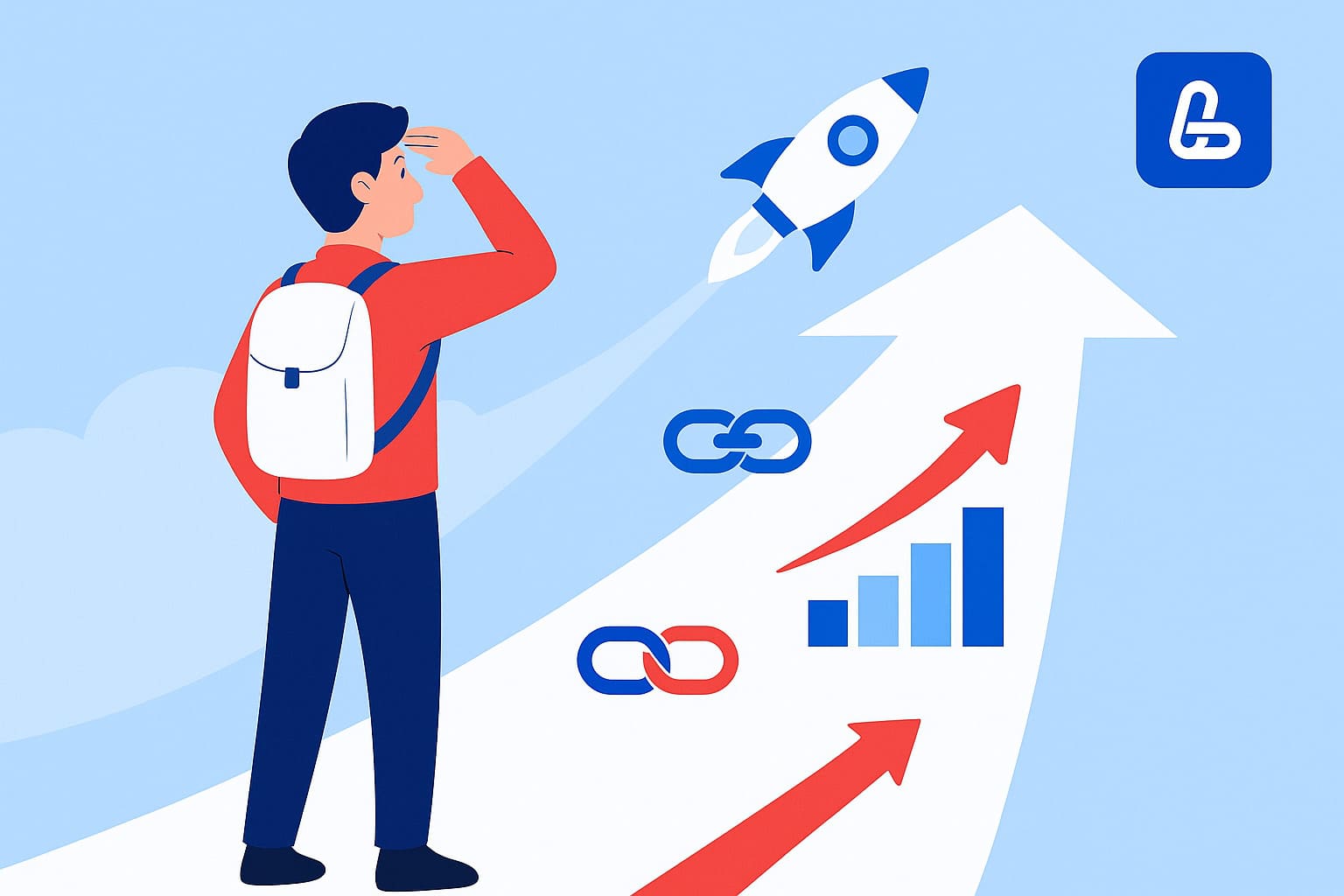
Algorithms Are Getting Smarter
Google and other search engines are increasingly rolling out advanced mechanisms to fight manipulative link-building practices:
- Algorithms like SpamBrain are capable of detecting repetitive link patterns and private blog networks (PBNs).
- The role of E-E-A-T (Experience, Expertise, Authoritativeness, Trustworthiness) is growing, and confirming these factors requires high-quality, relevant backlinks.
- The importance of local donors and multilingual content is rising for international SEO projects.
For small in-house teams, managing all these requirements alone is almost impossible. It’s far more efficient to work with white-label link building partners, where donor research, backlink history checks, anchor text policies, and localization processes are already built into the system.
Transparency by Default
The market now demands openness. Clients want to see:
- Reports with clear metrics (DR, UR, traffic, indexation status).
- Defined SLAs for link replacements and fixed timelines.
- Fully branded documents that look like an internal product of the agency.
SEO white-label solutions make it possible to deliver such reports “out of the box.” The agency receives a ready-to-use product that seamlessly integrates into the client’s ecosystem, without exposing any behind-the-scenes operations.
Competition is Accelerating
Decision-making cycles in the digital marketing space are shrinking. Today, clients expect results here and now, which means agencies need to deliver the first placements within weeks–not months.
That’s why more and more companies are switching to white-label link building services for digital marketing agencies:
- They allow agencies to scale backlink production quickly.
- They help maintain a competitive edge in presales (where speed and transparent pricing are critical).
- They reduce risks–instead of experimenting, agencies rely on proven pipelines and vetted backlink donors.
In Short
The benefits of white-label link building for SEO agencies will only continue to grow:
- Faster launch and scalability.
- Controlled costs and predictable profit margins.
- Lower risk thanks to white-hat strategies and multi-layer quality assurance.
In other words, the market is shifting toward a model where agencies grow with white-label SEO partners, not by endlessly expanding their in-house teams. This approach ensures profitability without inflating staff size or sacrificing quality.
Conclusion
Put simply, white-label link building means scaling without losing quality or reputation.
An agency gets:
- Predictable costs and transparent budgets.
- Access to a vetted donor base and professional link building tools.
- White-label backlink acquisition with fully branded reports.
- Freedom to focus on strategy, client retention, and LTV–while delegating operations.
A professional SEO white-label partner equals stable agency growth without headaches:
- More consistent placements.
- A managed anchor text mix and balanced link profile growth.
- Protection of client branding (link building under client brand / under client branding).
- A flexible system that works equally well for 5, 50, or even 500 projects.
Ready for Predictable Growth?
Partner with LinkBuilder.com and turn link building from a chaotic process into a fully managed product with transparent economics and scalability.
What you get when working with us:
- Turnkey link building
A complete cycle: strategy, donor selection, outreach, placements, and analytics. No need to keep a dedicated in-house team of link builders, editors, and managers–we’ve got it covered. - Guest posting (outreach)
We create expert content under your client’s brand–articles that look natural, reinforce expertise, and match their tone of voice. Backlinks are placed as if earned by your in-house team. - Digital PR and HARO
Editorial mentions in media and natural links from top publications. This is more than link building–it strengthens your clients’ E-E-A-T and boosts their online reputation. - AI SEO GEO
A proprietary white-label SEO solution from LinkBuilder.com that helps agencies speed up donor selection and anchor text planning, taking regions, languages, and local specifics into account.
With LinkBuilder.com, your link building works like a ready-to-use product: predictable, scalable, and safe. You maintain full brand control and get complete reports under your logo, while we handle the operational work and quality control.
Result: satisfied clients, higher LTV, and steady agency profitability without expanding your team.
Book a free consultation and choose white-label solutions for your brand now.
